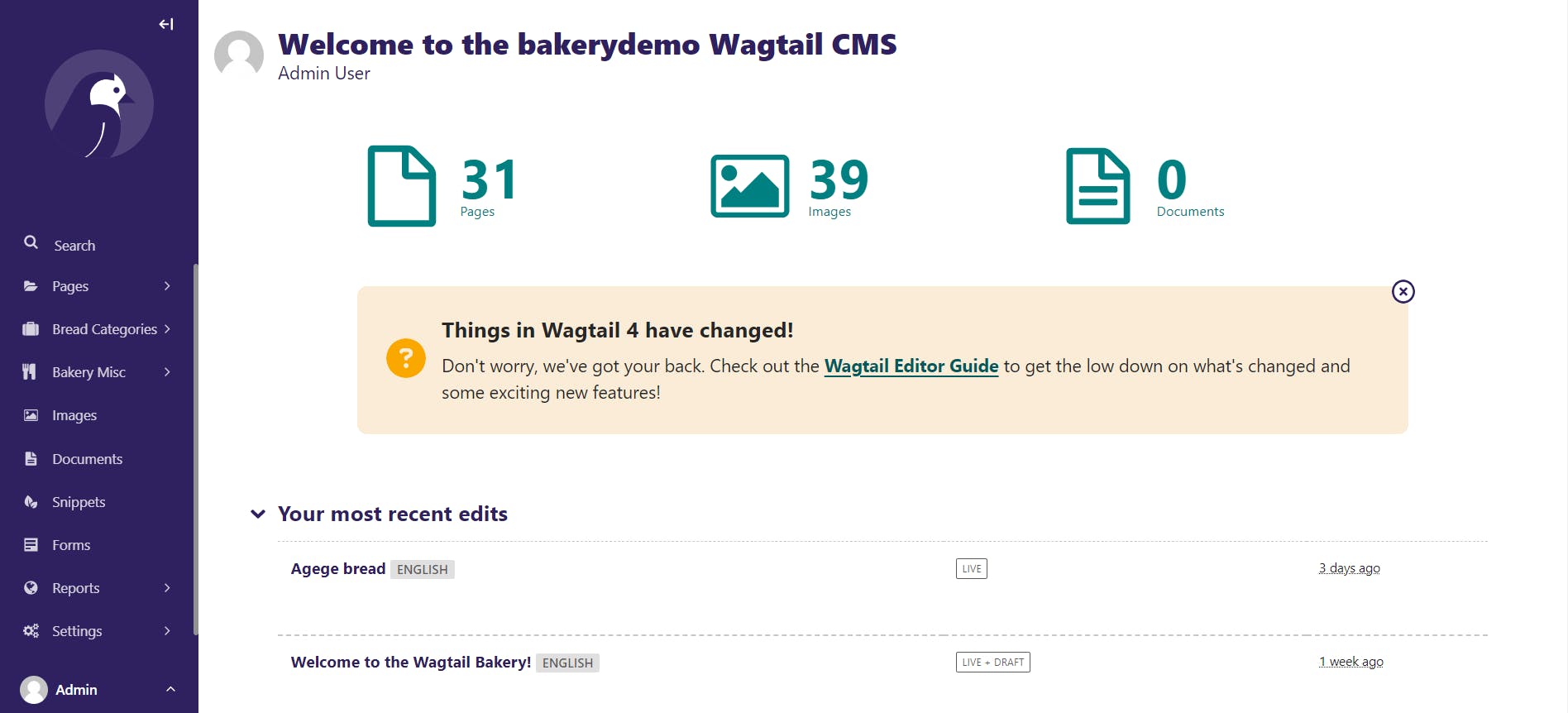I wish you all a happy holiday season!
This is the last week of the year, and I can't help but reflect on my experience so far in the technology industry. What I find more important is how my Outreachy internship experience with Wagtail has impacted my career.
In my first article on Outreachy, I shared with you what the program is all about and how I got in. I also shared with you what project I’m working on and what motivated my project choice.
In this article, I describe what Wagtail is, why you should use it for your content management, and how you can contribute to the Wagtail project. Also, I share what I accomplished this week.
What is Wagtail?
Wagtail is an open-source content management system(CMS) built on the Django framework by Torchbox. It is one of the most actively developed open-source CMSs. Wagtail currently ranks first among open-source Python CMSs according to Github activity.

What Wagtail is not
Wagtail isn’t an instant CMS out of the box. You cannot create a Wagtail website by dragging and dropping UI elements, as some CMS allow. In order to use Wagtail, you need a programmer who understands the Python programming language and is familiar with the Django framework.
Why you should use Wagtail
There are several reasons why you should consider using Wagtail, including the following:
It's a great CMS for many websites because it’s fast and scalable.
It's highly customizable at a reasonable cost.
It inherits Django’s strong approach to security.
It integrates well with customer relationship management(CRM) and marketing automation platforms, as well as ticketing and event management systems. It also integrates well with payment fulfilment systems.
It allows you to assign roles to different website managers. There are three default roles in this regard: editors, moderators, and administrators. Editors create drafts, while moderators edit and publish those drafts. The primary duty of an administrator is to add or remove editors and moderators, or change their roles. An administrator can also create and publish drafts.
Several organizations have adopted Wagtail, including the National Aeronautics and Space Administration(NASA), Google, and the National Health Service(NHS).
How to contribute to Wagtail
Wagtail has one of the most welcoming open-source communities that I’ve been a member of. You can contribute to Wagtail by first checking to see if your bug or feature request is an open issue. If it is and you have some supporting information that can help in resolving the issue, then comment on the existing issue. If it’s not an open issue, create a new one with as much relevant context as possible.
If your bug report is a security issue, don’t report it as an issue. Read the guide to reporting security issues to understand how to report a security bug.
You can also join the Wagtail community on Slack.
Outreachy: Week four in review
As you know, I was worried last week that I was behind schedule on three important tasks. Well, I have some good news to share with you this week. Two of the three tasks have been completed, and the project can move on to the next phase while the user research task is still ongoing.
This week, I completed the following tasks:
Completed the content outline proposal task.
Wrote a report on the current state of the user guide documentation.
Restructured and improved some parts of the existing user guide documentation.
The week ahead
Following the completion of the content outline and the report on the current state of the user guide tasks, the documentation project can move into the next phase. This phase involves the actual writing of the user guide documentation.
Next week, I plan to continue restructuring and improving the existing user guide documentation.
Read more about my Outreachy internship experience with Wagtail in my ongoing series of articles.

